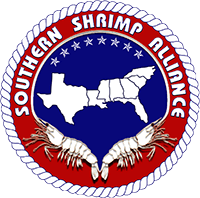The National Institute for Occupational Safety and Health (NIOSH) is the federal government agency responsible for conducting research and making recommendations for the prevention of work-related injury and illness. This includes generating data on casualties in the U.S. commercial fishing fleets.
For years the U.S. Congress and the U.S. Coast Guard have relied heavily on NIOSH data in developing statutory and regulatory safety requirements for the U.S. commercial fishing fleets.
Unfortunately, the data relied upon by many federal policymakers only presented the total number of casualties for each U.S. fishery without accounting for the different number of vessels, crewmembers and days fished in each fleet.
This led some policymakers to a number of incorrect conclusions including that the Gulf shrimp fleet was the most dangerous in the nation simply because it has the combination of more vessels fishing for more days with more crew than other fisheries.
For example, federal statutes and U.S. Coast Guard requirements pertaining to the design, construction and maintenance of new shrimp vessels have become cost prohibitive and do not reflect the true safety risks in this fishery. Consequently, few if any new offshore shrimp vessels are being built. As the shrimp fleet continues to age, the perverse result of these onerous vessel design, construction and maintenance requirements is that the Gulf shrimp fleet is actually getting progressively less safe.
Over the past several years SSA has presented a series of arguments to the U.S. Congress, the U.S. Coast Guard, the U.S. General Accounting Office (GAO) – and NIOSH itself – that such casualty data should be presented in the form of a casualty rate that reflects the size of the fleets, the size of the workforce and the number of days fished. In this way, policymakers can make a true and accurate assessment and comparison of the relative risks involved among different fleets and among different safety concerns within any given fleet.
To this point, SSA Executive Director John Williams stated: “Of course, safety comes first and we all want our shrimp boats and crewmembers to be as safe as possible. But, fisheries in the Pacific, Atlantic and Gulf of Mexico are all very different and face very different sea conditions and safety risks. We have to make sure our federal regulators understand what those differences are – and what the true risks and correct solutions are for each fishery.”
The new 2017 NIOSH report presents a 5-year update to its 2010 study of U.S. commercial fishing fatalities in order to identify current hazards among fisheries in four different regions of the country: Alaska, West Coast, East Coast, and the Gulf of Mexico.
Importantly, this new report also sets forth precisely the type of risk analysis SSA has been arguing for – based on the rate of casualties per Full Time Equivalents (FTEs) for each fleet. This type of rate-based analysis allows for an ‘apples-to-apples’ comparison among different U.S fishing fleets and also among different risk factors within each fleet.
The number of FTE’s for any given fleet was calculated as follows:
# Vessels × # Crew per Vessel × # Operating Days × 24 Hours
____________________________________________________________________
2,000 Hours (standard 40-hour work week for the year)
Thus, the casualty rate for various fisheries was calculated as follows:
# Fatalities
________________ × 10,000 = # of Fatalities per 10,000 FTEs
# of FTEs
Table 6 of the report goes on to state the following:
“Fatality rates were calculated for fleets that experienced five or more fatalities during a 10-year period (2005-2014) and where workforce estimates were available (Figure 6). For the Gulf of Mexico, workforce estimates were only available to calculate a fatality rate for the shrimp fleet. During 2005-2014, the Gulf of Mexico shrimp fleet experienced the highest number of fatalities in the nation, with 48 crewmember deaths. However, due to the large size of the workforce, during this period the Gulf of Mexico shrimp fleet had the nation’s lowest fatality rate among fleets where fatality rates were calculated.”
Williams added; “It was a pleasure working with NIOSH on this safety issue and I’m very pleased that after years of misunderstandings about the true safety issues in the Gulf shrimp fleet that have made it impossible for anyone to build a new offshore shrimp boat, this is a huge step in the right direction to getting our shipyards back to building modern shrimp trawlers. While we may be the safest fleet in the nation, every day shrimp boats are getting older and less safe. The regulatory situation has been completely upside-down and we will be taking this important new report to Congress and the Coast Guard in the coming months to try get this situation turned around.”
For the Gulf of Mexico report: https://www.cdc.gov/niosh/docs/2017-174/pdf/2017-174.pdf
For all four of the regional reports: https://www.cdc.gov/niosh/topics/fishing/pubs.html
